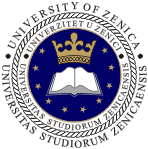SELECTION OF THE MINIMUM RADIUS OF THE PUNCH IN THE “CLINCHING” JOINING PROCESS FOR ACHIEVING MINIMUM JOINT STRENGTH FORCE
In order to meet the increasingly stringent requirements and growing needs of customers across most industrial sectors, particularly in the modern automotive industry, environmental protection, and energy consumption reduction, new materials and methods for their joining that cannot be performed using conventional joining technologies are increasin...
By Ibrahim Plančić, Benjamin Čukle
THE ASSESSMENT OF THE FORMABILITY OF SHEET METAL USING NUMERICAL SIMULATION IN DEEP DRAWING PROCESSES
Traditionally, the design of manufacturing technology and tool construction for metal forming processes relies on literature guidelines and the extensive experience of engineers. Today, the technology of deformation processing is in rapid development based on the application of computers, which enable extensive research and studies. This is also tr...
By Ibrahim Plančić, Amina Agić
ANALYSIS OF FORMABILITY IN BENDING USING SOLIDWORKS SOFTWARE
Formability is the ability of a material to deform without fracturing, and the assessment of this property depends on various factors such as temperature, deformation speed, and stress state. There are two main approaches to determining formability: one is based on testing different materials under controlled stress conditions, and the other on dev...
By Ibrahim Plančić, Amina Ćurić, Amila Brkić-Omić
INVESTIGATION OF CUTTING CONDITIONS INFLUENCE ON SURFACE ROUGHNESS DURING MQL MACHINING OF STEEL
In the paper, the influence of the cutting conditions (cutting speed, feed, and depth of cut) duringthe machining of the cylindrical steel part on the surface roughness (average surface roughness-Ra) is analysed using experimental investigation. The material used in the full factorialexperimental investigation was C45 steel, a diameter of 50 mm, ma...
By Tarik Gazić, Sabahudin Ekinovic, Edin Begović, Ibrahim Plančić
